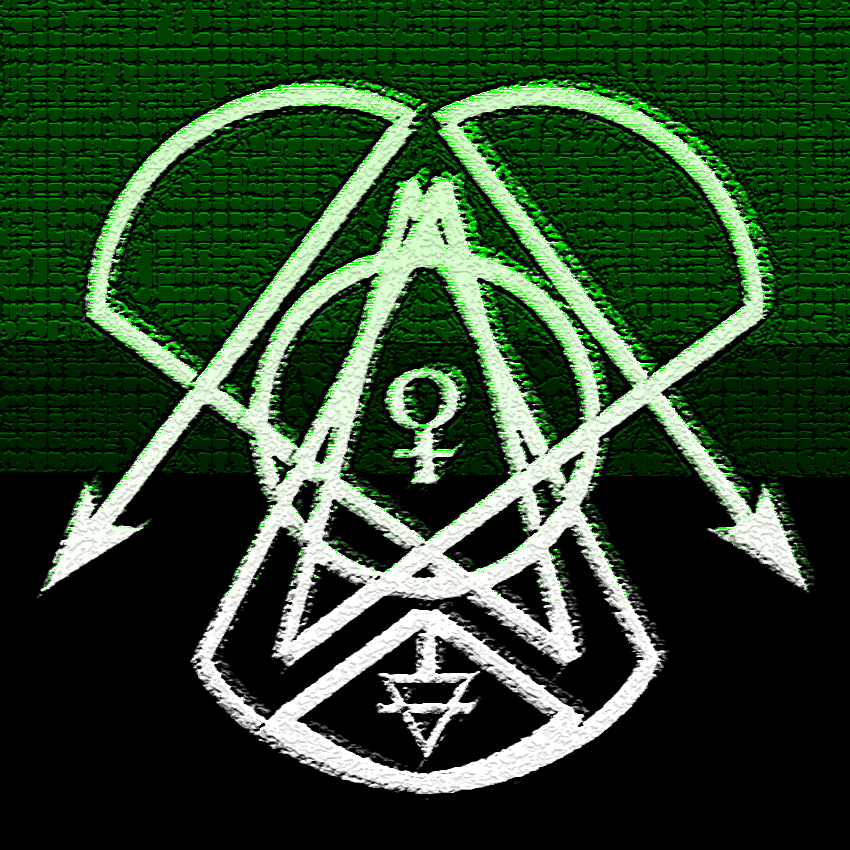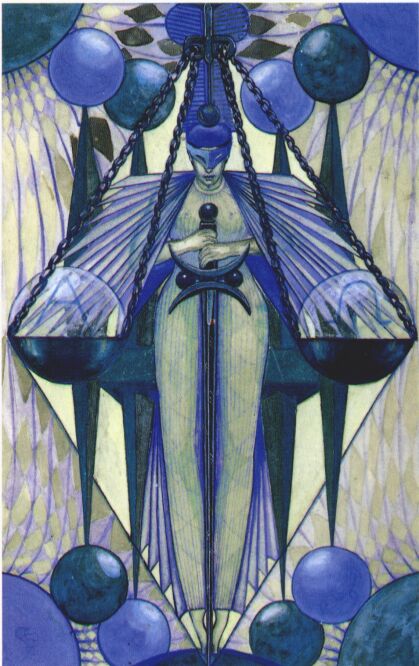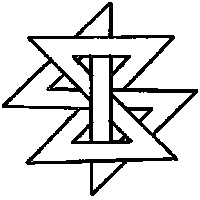Numeric Egregore of Seven
( the zenseiderz.org GoN tribute R&D initiative )

Image by Iskandar Sakut abn Mayu c. 2015
7 : Enchantment of the Virgin ♀
The profits of peace, the principles of pleasure
the Septence
|
GoN Enumes: Consciousness = 7 / Psychosis = -7 Mantra: RIN MOS TEF VUCH Archetypal Dichotomy: Lawful Maiden / Chaotic Temptress The Numeric Egregore of Seven corresponds to the planet Venus, which governs the 7th House in astrology (Libra), focusing on partnerships and our awareness of others. Venus, the planet of beauty and affection, significantly influences the Numeric Egregore of Seven. This influence is genuine, adding depth and sensuality to the thoughtform. This artistic influence positions Seven-identifying individuals as leaders in their fields and may guide them toward careers in choreography, filmmaking, interior design, haute couture, and other domains where managerial skills and an appreciation for aesthetic potential are valued. Seven-identifiers often work as social media influencers, beauty icons, wardrobe stylists, makeup artists, fashion enthusiasts, gallery curators, and subcultural engineers. These 7-kin frequently possess cutting-edge instincts in various career paths, including cinematography, performance art, photography, videography, and many other professions related to graphic design, logo creation, digital animation, botany, and gardening. The distinguishing characteristics of 7-kin are their peaceful nature, enjoyment of life, readiness to love, and numerous aesthetic pursuits. Positive traits include attractiveness, an easygoing demeanor, artistic talent, and sociability. Negative traits may manifest as excessive drama, coldness, pretentiousness, and a tendency toward sycophantic behavior (i.e., overly obedient, gushing, superficial, insincere, snobbish, and artificial).
Magickal uses and other faculties Seven introduces us to practices such as affirmations, basic human kindness, and decency. A smile and compliment go a long way in this world. They should not be discounted. She also intriduces us to behavioral mirroring which might also or usually be attributed to the Numeric Egregore of 9 ruled by Luna, as the moon represents most inherent aspects of reflective magick since the light of the moon is simply refracted sunlight. Venus implies the wonderous abundance of nature which always provides more than can be used by even large tribes of humans. Except now with commerce overload and climate crisis threatening our species, civilization, and the future as a whole abundance isn't so prevalent any longer. Agriculture has altered the landscape and we have instituted a synthetic abundance in farming and gardening. However, it seems only the least wealthy members of society are involved in agribusiness at the ground level. Corn and soy is rampantly overused and overfarmed. Everything farm livestock consumes is mostly made from corn and corn byproducts. Oracular keys of the Ergi Seidr heuristic The planetary atu is the primary correspondence that's referenced directly
Religioccultural minutia referencing Seven (7) The ancient Greeks recorded 7 classical planets in late antiquity (c. 150-750 CE), which are listed from brightest to dimmest:
These seven luminaries derive from Babylonian astronomy (c. 700-600 BCE):
Archons of the Hebdomad In Gnosticism and similar faiths, Archons are the material universe's architects. These rulers embody the seven planets that obstruct souls from leaving the physical world. In Manichaeism, the Archons control a domain within the "Kingdom of Darkness," collectively forming the Prince of Darkness. In The Hypostasis of the Archons, they are physically depicted as hermaphroditic with beastly faces. The seven Archons, known as the Hebdomad, that created the world are perceived as semi-hostile forces and considered the last and least manifestations of the Godhead. Below them, often thought to derive from them, exists the domain of malevolent powers. Yet, there are significant exceptions; Basilides introduced the idea of a "great Archon" called Abraxas, who governed 365 Archons. The Apocryphon of John, the Ophite Diagrams, On the Origin of the World, and Pistis Sophia all demonstrate that Archons play a crucial role in Gnostic cosmology. Initially associated with the Greek daimons of the planets, in Gnostic thought, they evolved into malevolent rulers responsible for the material realm. The Ophite Diagrams asserted the existence of these seven Archons:
In the Gnostic Nag Hammadi text On the Origin of the World, the Seven Powers of the Heavens of Chaos are:
Mandean cosmology Among the Mandaeans, there is a conception of the seven luminaries that may predate its later use by other Gnostic movements. In Mandaean cosmology, the being known as Ptahil-Uthra, while not a deity, is considered the primary archon, as he is seen as the creator of the material world. The seven classical planets are typically regarded unfavorably in Mandaeism, as they are part of the entourage of Ruha (Namrus), the Queen of the World of Darkness, who is their mother and Ur, their father. Ruha and her family are captives of the angel Manda-d'hayye ('Knowledge of Life'), who pardons them, places them on chariots of light, and designates them as rulers of the world. The names of the seven planets in Mandaic derive from Akkadian. Some trace back to the Sumerians, as Akkadians borrowed many deity names from them.
Planetary hours and Names of the days of the week The Ptolemaic system used in ancient Greek astronomy placed the planets by order of proximity to Earth in the then-current geocentric model, closest to furthest, as the Moon, Mercury, Venus, Sun, Mars, Jupiter, and Saturn. In addition, the day was divided into seven-hour intervals, each ruled by one of the planets, although the order was staggered (see below). The first hour of each day was named after the ruling planet, giving rise to the names and order of the Roman seven-day week. Modern Latin-based cultures, in general, directly inherited the days of the week from the Romans and they were named after the classical planets; for example, in Spanish Miércoles is Mercury, and in French mardi is Mars-day. The modern English days of the week were mostly inherited from gods of the old Germanic Norse culture: Wednesday is Wōden’s-day (Mercury), Thursday is Thor’s-day (Jupiter), Friday is Frige-day (Venus). Equivalence here is by the gods' roles; for instance, Venus and Frige were both goddesses of love. It can be correlated that the Norse gods were attributed to each Roman planet and its god, probably due to Roman influence rather than coincidentally by the naming of the planets. A vestige of the Roman convention remains in the English name Saturday.
Alchemical Metals involved in the Great Work Traditionally, each of the seven planets in the Solar System as known to the ancients was associated with, held dominion over, and "ruled" a certain metal.
Earth's escape velocity is 7 miles per second Seven primary and secondary colors in the visible spectrum: blue, red, yellow, orange, green, violet, and indigo; Seven main systems of the body cardiovascular, digestive, endocrine, excretory, immune, muscular, nervous, reproductive, and skeletal Seven bodily chakras (glands): the perineum, muladhara (adrenal); the navel, svadisthana (sacral); the solar plexus, manipura (celiac); the heart, anahata (thymus); the throat, vishuddi (thyroid); the third-eye, ajna (pituitary); the crown, sahasrara (pineal). Seven notes in C major scale: C, D, E, F, G, A, and B. Music in India has "Saptak Swaras," seven octats (sa, re, ga, ma, pa, dha, ni) that are the basis of music, with which hundreds of Ragas are composed. The number of daughters of Atlas in the Pleiades (also called the "Seven Sisters"). Mahatma Gandhi's list of the Seven Blunders of the World that cause violence: wealth without work, pleasure without conscience, knowledge without character, commerce without morality, science without humanity, religion without sacrifice, and politics without principle. Number of heavens and hells in Islam. The number of main islands of mythological Atlantis. The number of gateways traversed by Inanna during her descent into the underworld. The number of palms in an Egyptian sacred cubit. The number of ranks in Mithraism. The writings about the seven-headed dragon appear throughout India, Persia, the Far East, especially Cambodia, but also Celtic and other Mediterranean myths. The seventh ray of the sun is the path by which the human beings pass from this world to the next. Seven days is the period for fasting and penitence. Astrology: There are seven stars of the Great Bear which are indestructible. Buddhist: Seven is the number of ascent and of ascending to the highest; attaining the center. The seven steps of Buddha symbolize the ascent of the seven cosmic stages transcending time and space. The seven-storied prasada at Borobadur is a sacred mountain and axis mundi, culminating in the transcendent North, reaching the realm of Buddha. Christian: Seven is idealogogy. God is represented by the seventh ray in the center of the six rays of creation. There are seven sacraments; gifts of spirit; the seven of 3+4 theological and cardinal virtues; deadly sins, tiers of Purgatory (in metaphysical belief this would be one of the lower astral planes - or in Buddhism, one of the Bardo planes). There are 7 councils of the early church - crystal spheres containing the planets - devils cast out by Christ - joys and sorrows of Mary the Blessed Virgin, mother of Jesus - liberal arts - major prophets - periods of fasting and penitence - seventh day after the six of creation In the Old Testament there are the seven altars of Baalam; oxen and rams for sacrifice; trumpets; circuits of Jericho; seven times Naaman bathed in the Jordan. Seven is the number of Samon's bonds; the child raised by Elisha sneezed seven times. The Ark rested on the seventh month and the dove was sent out after seven days. The number seven is used 55 times in Revelation. It usually means fullness or completeness as in seven days of the week. God rested on the seventh day. Examples abound: seven churches, seven trumpets, seven seals, seven bowls, seven eyes etc etc. Egyptian mythology: There are seven Hathors as Fates and the priestesses of Hathor have seven jars in their seven tunics. Ra has seven hawks representing the seven Wise Ones. Six cows and a bull represent fertility. There are seven houses of the underworld, as depicted in Egyptian myths, with three times seven gates. Seven is the sacred number of Osiris. Graeco-Roman: Sacred to Apollo, whose lyre has seven strings, and to Athene/Minerva and Ares/Mars; Pan had seven pipes (again a reference to seven musical notes and frequency); there seven Wise Men of Greece. Hebrew tradition: Seven is the number of occult intelligence. There are seven Great Holy Days in the Jewish year; the Menorah has seven branches; the Temple took seven years to build; and there are seven pillars of wisdom. Hinduism: there are Seven Jewels of the Brahmanas and seven gods before the floods and seven Wise Men saved from it. Islamic: The perfect number is seven. In Islamic tradition there are references to seven: heavens, climates, earths and seas, colors, prophets, states or stations of the heart. The Ka'aba is circumambulated seven times representing the seven attributes of God. Magic: There are seven knots in a cord for "spellbinding" and incantations are sevenfold. Certain orders of Brotherhood use the theme of tying seven knots in their rope sash worn around their waist. Mithraic: The cave of Mithras has seven doors, seven altars, and a ladder with seven rungs depicting the seven grades of initiation into the mystery schools. Pythagorean: Seven is a cosmic number with three of heaven and four of the world. Sumero-Semitic: There are seven lunar divisions and days of the week. "Thou shalt shine with horns to determine six days and on the seventh with half a crown.", the seventh thus becomes opposition to the sun and symbolizes darkness and balefulness and therefore is dangerous to undertake anything on the seventh day because that is the day of rest. We can see here the influence of this belief in other religious contexts. There are seven zones of earth; heavens, symbolized by the planes of ziggurat. There are seven branches to the Tree of Life each having seven leaves. Leaves are symbols of fertility, renewal and growth. There are seven gates of hell, seven demons of Tiamat and seven winds to destroy her---interesting to note that in many belief systems it is said that the astral plane has seven levels to it--one sound on one of those levels is "wind." Seven is a mystic number traditionally associated with Venus and more recently with Neptune. It is the number of feelings and of instincts - of the Group Mind, of Love, whether that strange, indescribable but pervasive feeling of love is towards another person, a pet, oneself or one's God. 'Love' embodies tremendous sexual energy, the emotions of which may be directed in various ways. Heptagon is the inward directing of that emotion, the containment, the 'love inside', that is symbolized by the heptagon. It is the love we 'hold' and can equally signify a deep religious conviction, a forming of our God in our own image or an infatuation with another. It is feeling contained. The 7-pointed star or heptagram is a mystical occult symbol. Like the pentagram, it has been called the Witch's Star, also the Astrologer's Star. Beyond six points, the polygrams all have multiple configurations and the heptagram may be drawn in two different ways - an obtuse form and an acute angled form; both forms are unicursal, (here shown together with the third 7-point figure, the heptagon). In cabalistic terms, the number '7' is attributed to Venus. It relates to Man's mundane feelings and his instincts - to his sexuality . It relates to Man's place in the pattern of Nature and to his linking with the Group Mind - the undifferentiated Soul of Mankind. Man's pattern of mundane life is much ruled by the seven day cycle of the week. The seven classical 'planets' : Sun, Moon, Mars, Mercury, Jupiter, Venus and Saturn lend their names to the days of the week and may be arranged around the figure of the heptagram. Placed around the acute heptagram in the order of their apparent speed of movement in the heavens, the 'planets' are ordered along the unicursal line in the order of days of the week. The heptagram also relates to the seven chakras of the body. These are the energy nodes (nadis) that rise up the course of the spine from the basal node, where is coiled the Kundalini serpent, to the point at the top of the head. The mundane well-being of the body and its aura are linked to the chakras. The heptagram is symbolic of this balanced, flowing of bodily energies and of health. It is a symbol relating to healing and dynamic balance of the body physic. There are two forms of heptagram: The obtuse form suggests passivity, contentment and attuning with nature and its forces; of healthy rhythms and normal sexuality; of balanced feelings and satisfied desires; of normal receptivity and awareness of the feelings of others. The acute, active form suggests an outgoing interaction with nature's forces, making progressive use of them and directing sexual energy. It suggests strong feelings and strongly expressed desires; likewise perhaps, heightened sensitivity to the emotions of others. It is a symbol of the empath and the healer. Combining the three seven-pointed figures together, creates a beautiful mandala of meditation.
Color choices for Green include:
Other color choices for Green (light to dark) include: Phrases that include the color Green:
Oracular keys of the Ergi Seidr heuristic The zodiacal atu is an auxillary correspondence that's referenced parenthetically
The Magician's Dictionary: 7 - "The Totality of Creation; Earth's escape velocity (M. P. S.); Will; Classical Planets; tones; the inferior power zones; The Dragon's head; Scorpion; Swastika; Hyena; Serpent, Lion, Ape, Typhon; Colors in the spectrum; Opportunity (because man develops by 7 year periods). Number of overcoming, victory, accomplishment. Perfect harmony. The Virgin, symbol of eternal rather than created things." the Thoth Tarot deck
( source: Aleister Crowley's Thoth tarot deck booklet documentation )
( source: Aleister Crowley's Thoth tarot deck booklet documentation ) from Crystalinks.com: "If 6 represents humanity then 7 - the center of the spiral is humanity's connection to its source, god, Christ consciousness - or whatever name you prefer. Seven is the number of the Universe. It is the three of the heavens (soul) combined with the four (body) of the earth; being the first number containing both the spiritual and the temporal. In looking over the list of meanings it doesn't take long to figure out why the seven has become significant in metaphysical, religious and other spiritual doctrines - as seven represents the virginity of the Great Mother - feminine archetype - She who creates. There are 7 ages of man, ancient wonders of the world, circles of Universe, cosmic stages, days of the week, heavens, hells, pillars of wisdom, rays of the sun, musical notes - sound as frequency plays a key roll in matters of Universe. There are over 80 octaves of frequency [88 keys on full-sized piano] each governing a specific manifestation in Universe."
| ||||||||||||||||||||||||||||||||||||||||||||||||||||||||||||||||||||||||||||||||||||||||||||||
|
Nothing has Being |
Everything has Value |



